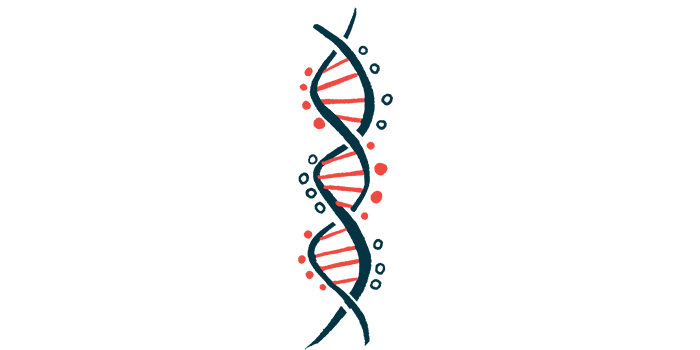Novel Exon-skipping Therapy Mix May Be Able to Treat Over 40% of DMD

An international team of scientists has developed a novel exon-skipping therapy mixture that has the potential to treat more than 40% of people with Duchenne muscular dystrophy (DMD).
The therapy was described in a study, “Development of DG9 peptide-conjugated single- and multi-exon skipping therapies for the treatment of Duchenne muscular dystrophy,” published in the journal PNAS.
DMD is caused by mutations in the DMD gene, which provides instructions for making dystrophin, a protein that is essential for muscle health. Like other protein-coding genes, the DMD gene contains sections that code for the protein, called exons, which are interspersed with non-coding regions called introns. The DMD gene has 79 exons in total.
When the gene is “read,” the cell makes a copy of the entire sequence in a temporary molecule called messenger RNA. The sequence is then edited, removing the introns and splicing the exons together, to form the mature protein-coding sequence.
Most DMD-causing mutations lead to one or more exons being deleted from the sequence. This results in a frameshift, where all of the code after the mutation is out of alignment — sort of like rearranging the letters in a sentence, resulting in a nonsensical code. The cell then ends up making a truncated protein that is rapidly degraded.
The general idea of exon-skipping therapies is that “skipping over” certain exons can correct the frameshift, allowing the rest of the gene to be “read.” The end result is a shorter-than-normal, yet functional version of the dystrophin protein.
To date, four exon-skipping therapies have been authorized for use in the U.S. However, each of these works to skip one exon, meaning they are only suitable to treat about 8% to 14% of DMD patients, depending on the therapy.
Skipping more exons may allow for a more widely applicable therapy. In particular, exons 45 to 55 are a “mutation hotspot” in DMD, and the researchers estimate that more than 40% of DMD patients would be eligible for an exon-skipping therapy targeting these exons.
To develop a therapy that can skip exons 45 to 55, the scientists started with a combination of phosphorodiamidate morpholino oligomers (PMOs) designed to skip all of the exons included in this region. PMOs, already used in DMD treatment, are basically small DNA analogs that can target a specific genetic sequence to induce skipping of an exon.
In cell experiments, the mixture of all the PMOs resulted in significant skipping of exons 45 to 55. From the overall mixture, the researchers then removed individual PMOs and tested the resulting efficacy, until they had established the fewest individual PMOs while retaining maximal exon skipping.
A notable obstacle in the development of exon-skipping PMOs is that it is difficult to get these small molecules inside of cells. To get around this issue, the researchers attached their PMOs to a cell-penetrating peptide (a small chain of amino acids, the building blocks of proteins) called DG9. Experiments in mice using a single PMO designed to skip exon 51 of the DMD gene confirmed that adding this peptide increased the potency of PMOs.
The team then tested the minimized combination of PMOs, all attached to DG9, in a mouse model of DMD amenable to skipping exons 45 to 55. Results indicated that the treatment promoted exon-skipping and dystrophin production: dystrophin levels were 0.76% of normal in treated mice, significantly higher than in mice given a sham treatment (0.46%).
“We have shown proof of concept that a minimized PMO mixture for skipping human DMD exons 45 to 55 could be developed,” the researchers concluded. “We have also identified DG9 to be a promising, effective cell-penetrating peptide for PMO conjugation for both single-exon and multiexon skipping approaches.”








